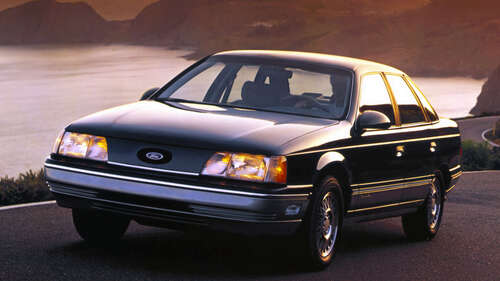
For those with far more experience in the realm of modern cars, looking back at a photograph of the 1986 Ford Taurus — or even the genuine article in-person — may prove surprisingly underwhelming.
For all the buzz around its unique styling, the vehicle actually doesn’t look that dissimilar from a typical mid-size car in today’s world. However, that similarity is actually proof of the Taurus’ significance. In many ways, Ford’s 1986 juggernaut was the vehicle that popularized the sleeker, curvier, and more aerodynamic veneer that many cars employ nowadays.
While Ford emulated and incorporated many design elements of classic European cars into the Taurus’ development, the company also sought to position the car as something of an unprecedented revolution. Its reveal had a sci-fi theme, accentuating the decidedly alien aesthetic of its rounded exterior. In a market flooded with boxy car designs, the Taurus was fresh and evocative. Its futuristic sensibility was only bolstered in the public consciousness by its presence in popular media like 1987’s “RoboCop.”
The bold and unique design of the Taurus was a substantial part of its popularity with the masses. In turn, that popularity cemented the idea that the sleeker car design was here to stay. As time went on, more and more car manufacturers would align their range of automobiles with the minimal hard edges of the Taurus, until this design philosophy grew into the dominant basis of the industry. Suffice to say, if not for the Taurus, the cars of today might look quite a bit different.

